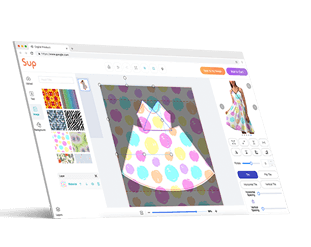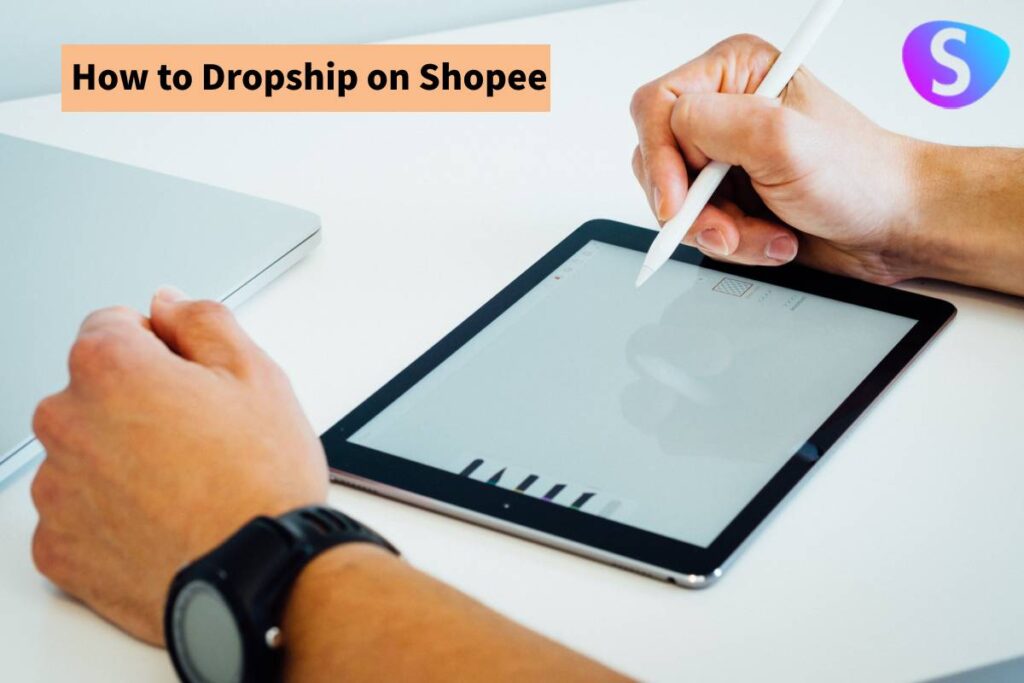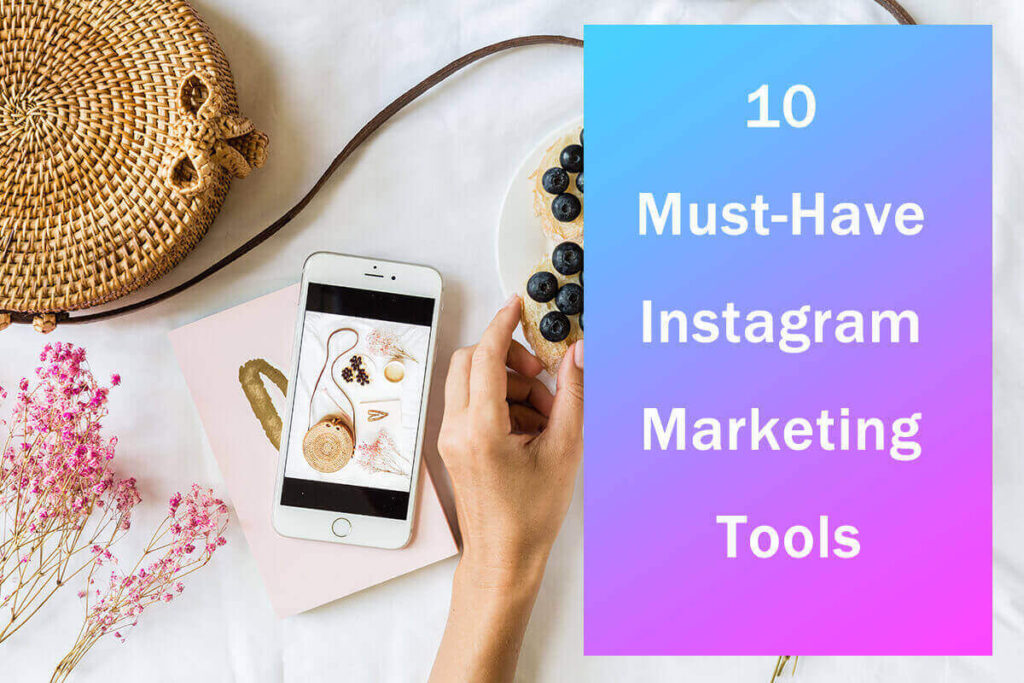Dropshipping for Beginners: Build a Successful Online Store in 3 Steps

Dropshipping is a business model that took off in popularity in the past few years.
However, in spite of the countless online gurus teaching you how to create a Shopify store or how to start dropshipping from scratch, the results show a slim success rate. Around 90% of all dropshipping businesses fail during their first month alone.
So, is the business model bust?
Not by a long shot. Dropshipping is still a thriving and profitable endeavor that can yield tens of thousands of dollars in profit. The main problem lies in the general misinformation about eCommerce that circulates around the web.
Thus, we have put together for you a comprehensive guide on how to start dropshipping successfully and ensure your store stays afloat. We will focus on aspects that nobody talks about, but which are very much necessary for a dropshipping business to succeed.
But first, let’s go over the misconceptions that make most eCommerce platforms fail in their first month.
Dropshipping Misconceptions Checklist
There are a few ideas out there that raise the expectations of dropshipping enthusiasts to unrealistic levels. If you ever come across any of these, it’s safe to say that you may have the wrong idea about the market.
- The market is already filled to the brim. This misconception tends to make dropshipping beginners wary of starting out. It implies that there are too many stores already and that there is nobody left to sell to. Needless to say, this is false. We only need to look at the rising rates in eCommerce shopping and the large margin of failure for most dropshipping stores to know this. Putting two and two together, we realize that the demand is growing, while the supply doesn’t keep up. In other words, perfect market conditions for starting a dropshipping business.
- The store will make sales on autopilot. While this is the end-goal of all eCommerce businesses, expecting it to happen from the get-go is unrealistic. You will need to build a marketing campaign, create an audience, a brand, and build popularity before aiming for automated sales. But our dropshipping guide covers all of this later on.
- Dropshipping is easy. While not as difficult as managing a warehouse-style eCommerce platform, dropshipping still requires time and effort. Building the store itself is rather easy, but ensuring that it succeeds and stays afloat is still difficult without proper guidance.
Build a Successful Online Store in 3 Steps
With the misconceptions out of the way, we will dive into what actually makes a dropshipping business successful. In short, there are three main steps to follow:
- Build a unique brand;
- Establish a strong online presence;
- Setup an online store that sells.
Each has its own ins and outs, but this is the essence of what makes a dropshipping business successful.
Step 1: Build a Unique Brand That Stands Out

The first step towards achieving success in dropshipping is properly building your brand. This refers to what you want your eCommerce platform to be. Here’s a useful checklist to help you do that:
- What do I want to sell? (establishing the niche);
- Who do I want to sell to? (the target audience);
- What represents my business (the logo and name).
However, you can’t speed through the brand creation process without carrying out due diligence before. This is one essential aspect that separates successful dropshipping businesses from the rest.
Find Your Ideal Buyers
Finding a target audience, or a niche, is a crucial step for any B2C sales (Business-to-Customer) platform. Being a jack-of-all-trades is not only less probable to be profitable in the long term, but it also makes it all the more difficult to lift your business off the ground.
Choosing and doubling down on a niche should be the foundation of your dropshipping business. Everything that you do from this point onward, including brand, online presence, and store, will revolve around this target audience.
So who is part of this target audience? Well, imagine what an ideal customer looks like for you. If you were to only market your store to one person, what would that person look like? What are their habits, preferences, language, and favorite online hotspots?
Answering these questions will show you exactly who your customers should be.
We also recommend that you select a market niche in which you are genuinely interested. If you choose something just for the sake of money, fatigue, stress, and overthinking will lead you to burn out sooner than you might expect.
Like any other business, a dropshipping store is a marathon, not a sprint. The longer you manage to stay in the market, the better your chances of succeeding will be.
What Does Your Ideal Customer Want?
The reason why choosing a specific, narrow niche is crucial is that you must get accustomed to what your ideal customer wants before building your brand. You need to research how they relate to the industry, the pain points they have, and the products that they are willing to buy to relieve them.
Many dropshipping businesses fail because they attempt to do this in reverse. They are looking to find a product, center their brand and store around it, then find somebody to sell it to. Of course, this has a much greater chance of failing, as you have no certainty that anyone will even demand your product until you launch the store.
By understanding your ideal customer and what they would be ready to buy, you essentially test how in-demand your product will be before investing any time and effort in the business.
Create Your New Brand Identity Around It
After carrying out the market research and understanding your ideal customer, it is time to start building your brand. You should use the information gathered before to come up with a name and logo that fit what your ideal customer would be looking for.
There are many websites out there teaching you how to come up with the best name and logo for your business. But while these sites have templates and tips that are universally proven to work in marketing, you must adapt them to your situation.
You should introduce elements of language and creative imagery that are specific to your audience. Try to incorporate inside jokes and relatable topics, and aim to make your store’s identity trustworthy and familiar. eCommerce is all about building trust between the seller and the buyer, and failing to do so can only result in overall failure for your dropshipping business.
Once you manage to properly build your unique brand and are able to answer the questions above, it’s time to boost your online visibility.
Step 2: Establish a Strong Online Presence

Marketing is the one aspect that most, if not all other dropshipping guides leave out. Without any reach, following, or engagement, your chances of selling anything are non-existent. Thus, your marketing strategy should be rock-solid.
However, you don’t need to start bulk-emailing marketing professionals or agencies. In fact, there are a handful of simple tips that can yield incredible results for the visibility of your eCommerce business. All of these are crucial for building online momentum, especially when it comes to B2C sales and eCommerce in general.
Keep an Eye on Your Competitors
Business is like climbing a dangerous mountain. Chances are that the most beaten, trodden path is probably one that works. Of course, you won’t know until you walk it, but it’s better than having no guidance at all.
Your competitors have already cracked the code of getting to their target audience. Seeing as this is the same audience that you are trying to get to, you should learn as much about their own marketing channels as possible. Some questions you may ask are:
- What social media platforms do they use?
- What does their website look like?
- How often do they get in touch with their audience online?
- What kind of style, tone, and personality do they project?
By drawing inspiration from them, you stand a good chance of understanding and copying marketing strategies designed by professionals. Of course, after reaching parity with your competitors, you should innovate and create a unique strategy.
But before reaching this point, it is very helpful to consider your competitors as a free and effective source of marketing wisdom.
Find Where Your Clients Hang Out Online
Not all marketing platforms are created equal. After spending time researching your target audience, you may have noticed that they tend to have some specific characteristics in terms of media. Maybe they read online articles more than they use Twitter or Instagram, or vice-versa.
Or maybe it would be easier to reach them via forum websites, such as Reddit. Either way, this tendency is crucial for finding the best marketing platform. You should aim to start your marketing efforts where your audience already is, so that you don’t have to drag them to another platform altogether.
Moreover, a practical tip to help you find the best marketing channel is to jot down some keywords or topics that your audience generally looks for. As an example, pet enthusiasts may often search for squeaky dog toys or cat-friendly furniture.
After writing a couple, try searching for them on various social media platforms. Those that return the most results are probably those where your niche is most popular. Hence, the best place to start.
Build Your Audience Before Launching Your Store
Many dropshipping beginners assume that launching a Shopify store online is the same as plugging in an automatic sales machine. They think that people will naturally find the store online, make purchases, and share it with friends.
Is it easy to get online traffic?
Needless to say, this is not the case. Online visibility is rather tricky, and ensuring that you have a successful dropshipping business means establishing an audience before the store is even live. That way, you will already have a group of people who trust you and your judgment, have a good relationship with you, and who would be willing to buy from you.
That being said, how do you build an audience? This is a complex and specific process, but we will go through some basic guidelines to help you find your footing. Building an audience through social media, blogging, vlogging, or other kinds of online content implies adding value to the community you are engaging with.
Through well-researched articles, witty posts, detailed guides, and any other kind of content suitable for your niche, you make people understand that:
- You are an expert and know what you are talking about;
- They should listen to your opinions and ideas;
- You are willing to give this information to them free of charge.
This, in turn, builds trust with your audience and helps create the foundation for sales. However, say that you already have some article, post, and video ideas in mind, and are ready to make them.
How do you ensure that your accounts gain traction?
In the beginning
Your main focus should be networking and reach. On Twitter, you can start following people interested in your niche, hoping that they follow back. On Instagram, you can talk to influencers and collaborate on a project, appear on a podcast, or do an interview with them. You should aim to get 100-200 people interested through these steps.
After getting this initial base of the following, your goal should be to engage with them as much as possible. Ask questions, participate in discussions, demonstrate that you know your stuff, and have good tips and information on the topics at hand. This makes people interested in what you have to say.
What’s next?
Now, you have a group of people, among the 100-200, who are interested in your expertise on the matter. This is the perfect opportunity to expose them to your content and show that you are willing to add value. Share articles, opinions, anything that may be suitable for your niche. Once you get some shares, retweets, or tags in stories, the ball is already rolling.
Of course, you can also pursue paid advertising directly, but not everybody has the upfront money to launch and run a long-term marketing campaign. For a bootstraps dropshipping business, your best bet is to only run advertising when the store can already pay for it, partially or entirely.
But running ads right off the bat may not be very effective, seeing as there is no initial following that likes, comments, and vouches for your store. The large volume of visitors will see it as deserted and won’t bother checking it out.
Lastly, asking for feedback, watching audience reactions, and seeing what others are doing are great ways of finding out what else can be done to solidify your audience.
Now that you have a unique brand and a loyal online following, you are finally ready to launch your dropshipping store. We will go through some crucial guidelines for your Shopify business in the following step.
Step 3: Setup an Online Store That Sells

With the first two steps out of the way, you should start focusing on building the perfect eCommerce platform for your business. Shopify offers a myriad of plug-ins, design options, colors, and website structures to give you the variety you need.
There is not one correct template to follow for your websites. Therefore, we will focus on some tips and best practices that are universally applicable and that should guide your efforts.
What Structure and Design to Use
Your main goal with a dropshipping website should be to keep things simple, yet still, be able to evoke certain emotions. When it comes to design and website structure, this is best done through a minimalist approach.
You shouldn’t be overloading your pages with all kinds of drop-down lists, tens of subsections, and monotone walls of long text. These aspects are usually red flags that put off potential customers.
Instead, you should aim for a minimalist design, including just the right amount of information, compact menus and subsections, and short text boxes that say what needs to be said simply and effectively.
What does “the right amount” mean? Generally, if it looks like a store you would give your money to, it’s going in the right direction.
Color Palette 101
Because most dropshipping stores are minimalist in design, the colors you choose for the website are limited and very important. Marketing specialists have developed guides on what kind of emotion each color evokes, which can be great sources of inspiration.
For instance, violet is a color that inspires spirituality, mystery, and depth, while blue inspires confidence, reliability, and trust. Having good know-how of this code works can be very useful to get your store’s message across.
Aside from this guideline, another well-established fact in marketing is that groups of three colors work best. Using a combination of three colors has the best chance of delivering a message to the visitors of the store.
For example, the combination of black, yellow, and red is one that translates to luxury, comfort, opulence, and quality. Certain brands, such as Sobranie, use these colors to make their products visually appealing, even to those who are not interested in their product.

The use of blue, black, and white, on the other hand, is a design choice used by companies such as Apple to project confidence, reliability, and influence. The color choice tells the visitor that their products are cutting-edge, market-leading innovations that offer the best technology there is.

Thus, you should research the different possible combinations of colors and come up with a palette that reflects the identity of your store, products, and business.
Smooth User Experience
When it comes to user experience, many businesses like to overcomplicate things. They add countless distinct sales funnels, offers, and promotions that overload the visitor and make decisions more difficult to take.
For your dropshipping business, you should aim to keep everything as straightforward as possible. You want to ensure those website functionalities, such as browsing, navigation, and check-out go smoothly. You can even go through the store as a customer yourself and see how easy or difficult it is to purchase something.
The easier it is to reach check-out and make the purchase, the more likely people will be to do so. You should also ensure that all payment options work and that there is no significant barrier to making payments.
Lastly, nothing should be too difficult to find. You should design your menus, subsections, and search bars in such a way as to make everything simple to find. Organization, discipline, and categorizing are crucial for making your dropshipping business successful.
After all, a smooth user experience doesn’t just stop at the website—how quickly orders are processed and shipped. Using 3PL fulfillment services by Rush Order will assist you in improving your order processing and shipping.
These are the general guidelines that we advise you to follow when starting your eCommerce business and creating an online store. Other aspects should be based on what your niche wants, what your brand’s message is, and what identity you want your dropshipping business to have.
Next, we will focus on three essential sales tips to help your eCommerce platforms make more sales and close in on profit optimization.
3 B2C Sales Techniques That Will Generate Hundreds of Orders
The sales techniques we will be going over should help your dropshipping business make more sales. They boil down to promotions that are beneficial both to you and the customer. Essentially, they are aimed at increasing your average order value.
- Minimum threshold offers. This technique implies offering the customer a certain perk or benefit (10% off, free shipping, an additional product for free) after raising their basket total above a minimum threshold. This is an additional motivation to help the customer buy more, which will also optimize profit generation for you.
- Order bumps. When customers put certain items from your store in the basket, chances are that you also offer complementary products (such as headphones and headphone cases, for instance). An order bump means creating a pop-up with a complementary product when the customer is in check-out. This helps them see the utility in buying an additional item, as it is next to the one they have already chosen. eCommerce platform builders, such as Shopify, allow you to create such order bumps, based on what category of products the customer bought from.
- Bundle offers. This technique implies creating bundles of multiple items that sell for less than the sum of those items when bought individually. They are often products that work together and are complementary (such as phone cases, stickers, and plug-in gadgets). A bundle incentivizes the customer to buy all the items, as the average cost per item decreases, but your order value goes in the other direction.
By using these strategies, your dropshipping business will make it impossible for the customer to not buy more. Thus, they help you reach profit optimization, make more sales, and register some hefty gains.
Find a Top-Tier Product Supplier
Product sourcing is the essence of a dropshipping business. No matter how good your marketing is, how much traffic your store has, or how well your brand is built, an eCommerce business still needs quality products to run properly.
Seeing as dropshipping is based on product sourcing, it is crucial to find a supplier that is efficient, autonomous, reliable, and smooth in terms of operation. This will maximize customer satisfaction, reduce refund requests, and ensure a high-quality experience on your eCommerce platform.
About Sup Dropshipping

At Sup Dropshipping, we aim to provide eCommerce businesses with the best product sourcing and logistics service experience there is. We take care of the backend processes for you and deliver a smooth shipping experience every time.
While some product sourcing stores, such as Alibaba, have become oversaturated, we make sure that our dropshipping partners have access to a wide range of unique quality products for their eCommerce platforms.
If you are ready to launch your dropshipping business today, get in touch with us for a product sourcing service done right.
About the Author

Jack Han
Jack is a SEO manager and blog writer at Sup Dropshipping. He holds an MA in Linguistics and Education. He has over 10 years experience in E-commerce, and 5 years of experience in SEO. Jack is an enthusiast to share his recent knowledge learnt from peer experts in the industry.
19 responses to “Dropshipping for Beginners: Build a Successful Online Store in 3 Steps”
-
Thank you for sharing! It helps a lot!
-
Thanks Eura for writing about the color palette, never thought about it. I will definitely use violet in my store from now on.
-
how to use wordpress for dropshipping?
-
yes, you can use woocommerce to start dropshipping
-
-
Muito bom esse conteúdo a questão das paletas de cores foi muito intessante parabéns pelo conteúdo.
-
thank you
-
-
Thanks for sharing this piece on LinkedIn with me. Went through it, it`s great!
-
Hi James,
Glad you like it 🙂
-
-
Спасибо за публикацию. Было полезно прочитать статью!
-
Went trough it and its awesome! For me the “B2C Techniques-part is very useful. Thanks for this.
-
Thanks for these valuable tips
-
[…] Build a Successful Online Store in 3 Steps […]
-
Hello 👋
-
Hi Gentiana,
Welcome to Sup Dropshipping.
But how can we help you? Please let us know it. Or you can contact our customer service for any queries.
Regards,
Sup Team
-
-
excellent article. thanks for valuable suggestions
-
Thank you and welcome to Sup Dropshipping!
-
Asalmalikum
-
-
Aslam o alaikum
-
‘ahlan wamarhaban bikum fi sub drubshibinghi!
la tataradad fi tasjil hisabik libad’ albahth ean almuntajat bi’afdal al’asear.
-





Leave a Reply